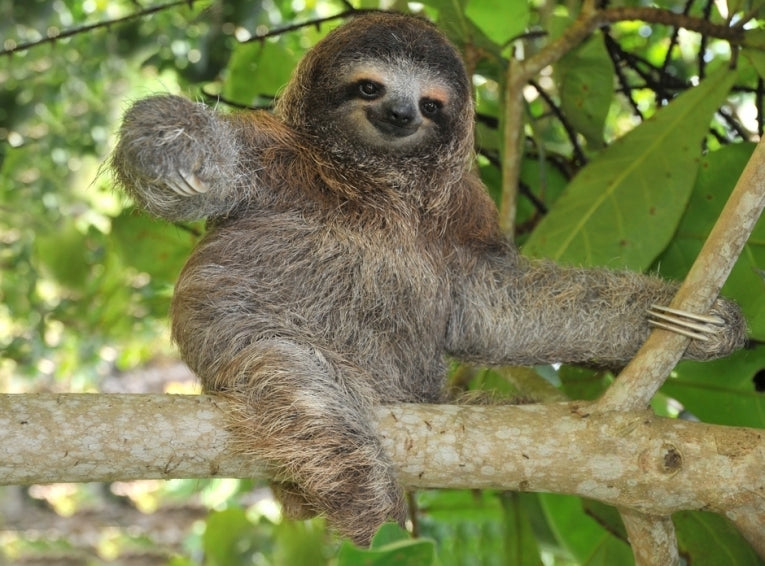Sam Kaviar, Jakob Shockey and Peter Sundberg of the Evergreen State College in Washington, have given us the low-down on that intrepid little character, endemic on the Caribbean island that everybody loves. No it's not him, it's the critically-endangered pygmy three-toed sloth, Bradypus pygmaeus. This amazingly-reduced version of the sloth family has been isolated for at least 8,900 years on the 10 mangrove swamps of this speck of land. The publication of the research was in the science journal, PLoS ONE.
The island is the little-known Isla Escudo de Veraguas in Panama, and the main problem is finding out how many of the little blighters are there. There were 79 in 2011, according to the survey, but Sam and his colleagues also talked to the native Ngà ¶be people, about their lobster and shark-fishing in particular, and otherwise conducted a very thorough check on feral cat populations, and two recent sloth fatalities.
The poor nutrition from the red mangrove leaves that these particular sloths rely on for food could have led to either the small size of the animals directly or to the natural selection of smaller sizes to cope with the decreased nutritional status of the food plant. On the mainland, the much larger Bradypus variegatus eats cecropia leaves, which are much more nutritious. Tracking some of the sloths on the island was easy, where the canopy was reduced. Beyond these 10 mangrove thickets, people had cut down most woody growth leaving the animals quite isolated, perhaps even genetically. Most sloths are loth to move on the ground.
The results were a total of 79 in this population and this species, give or take a few hiding in bromeliads or camouflaged next to their mother's fur! All were either in the 10 mangrove thickets (in just 5 "clumps") or within 20m of one. The research was carried out painstakingly, as you can imagine with such an IUCN critically-endangered mammal in just 107,000 square metres of island mangrove. The medium sized mangrove thickets were the favoured ones in the centre of the area, as shown.
Critically, the group tried to find if mangrove was eaten exclusively. If they are obligate mangrove specialists, these animals would not be able to use the upland forest for food or for any kind of shelter. They are unwilling to move on the ground, or to swim much, it seems, so the theory holds that they seem to be folivorous on only red mangrove, Rhizophora mangle in the tidal area. As the Ngà ¶be cut the trees for firewood a lot, to fuel their four camps, one on the east of the island, these clumps have been reduced. Such action is possibly causing decline in the sloth population in proportion to the decreasing mangrove availability.
The final conclusion about these plucky little sloths, surviving on such a limited diet in an ever more restrictive space, is that their fate rests with the Congress of the Ngà ¶be-Bugle Comarca. These people have apparently never been consulted about the fate of this species on what after all is their island. Perhaps they will choose to be as sentimental and conservationist as the rest of us, give the choice!















